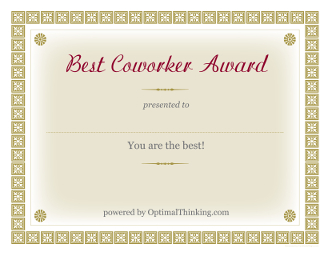Employee Motivation Programs to Optimize Engagement
Tired of one-day employee motivation programs that produce motivation for a day? Tried positive thinking motivational programs, incentives, rewards, and warnings and achieved temporary results? Interested in the employee motivation strategies and “Get motivated seminars” that optimize employee engagement?
Employee Motivation Strategies
1. External Motivation
- Fear — You had better get this right, or you will lose money, job, respect, relationship, status, etc.
- Incentives — If you do this right, you will gain money, recognition, status, better lifestyle, etc.
The impact of external motivation is temporary. When the threat or incentive is removed, motivation is lost.
2. Internal Motivation

You can create an inclusive “Best Place to Work” environment where loyal employees bring the best version of themselves to work. Optimal Thinking employees don’t rely on a pat on the back from management or a bonus at the end of the year to do their best. They focus on what is most important and ask the best questions to invite the best solutions.
Optimal Thinkers make the most of the hands they are dealt. External incentives, recognition, and rewards are secondary for these self-motivated optimizers. Workplace trust pervades an Optimal Thinking collaborative culture, including:
- credibility
- transparency
- respect
- fairness
- pride
- camaraderie
- optimization
Work With The Best in the Business
Employee Engagement Statistics
Recent research by Gallup and Harris Interactive Polling revealed:
- Only 29% of employees are actively engaged in their jobs while 54% are not engaged. 17% are actively disengaged.
- Only 10% of managers focus on what matters most to their organization. 90% of managers are either disengaged or distracted from key priorities.
- An engaged organization can lead to up to 18% increased revenue per employee. Only four in 10 U.S. employees say they have the opportunity to do what they do best every day. If this was 8 in 10, a company could experience an 8% increase in customer engagement, a 14% increase in profitability, and a 46% decrease in safety incidents.
Queen’s University School of Business conducted over 111,000 employee surveys on employee engagement over 10 years. They concluded that companies with the highest employee engagement achieve 15% higher employee productivity. They also generate up to 30% greater customer satisfaction.
The 4 Best Practices for Employee Motivation Programs
1. Create Your Own Optimal Thinking Workplace
Optimal Thinking leaders hire Optimal Thinkers with the skills to match job functions. They also educate employees in the art of consistent optimization. Employee motivation programs optimize employee motivation, engagement, and performance. Leaders deploy optimized “Get motivated” seminars and webinars, executive coaching and mentoring. They don’t settle for second best.
In the Optimal Thinking inclusive “Best Place to Work” organization, leaders understand their employees thinking styles and motivation. They respond to their unique needs and bring out the best from them.
Employees understand their dominant thinking, decision making, and core motivation. They are trained in the art of consistent optimization. They make the most of their talents, resources, challenges, opportunities, communications, and relationships. They experience a camaraderie that is only achieved when respectful individuals help each other to be their best.

2. Provide the Most Conducive Facilities and Compensation
The organization provides facilities and compensation that enable employees to be their best. Employees who are encouraged to be their best in the workplace experience fewer work-related accidents. They return to work promptly after sustaining injuries.
3. Optimize No Cost / Low Cost Employee Motivation Strategies
Optimal Thinking leaders set motivating goals to maximize enthusiastic participation and job ownership. They provide:
- fair treatment
- appropriate recognition
- the most collaborative teamwork environment
- performance rewards, and more
4. Minimize De-motivators
Our employee motivation programs assess and resolve demotivating company policies and behaviors, such as:
- unnecessary power plays
- destructive criticism
- unproductive meetings
- inefficient processes
- unclear expectations about employee performance




